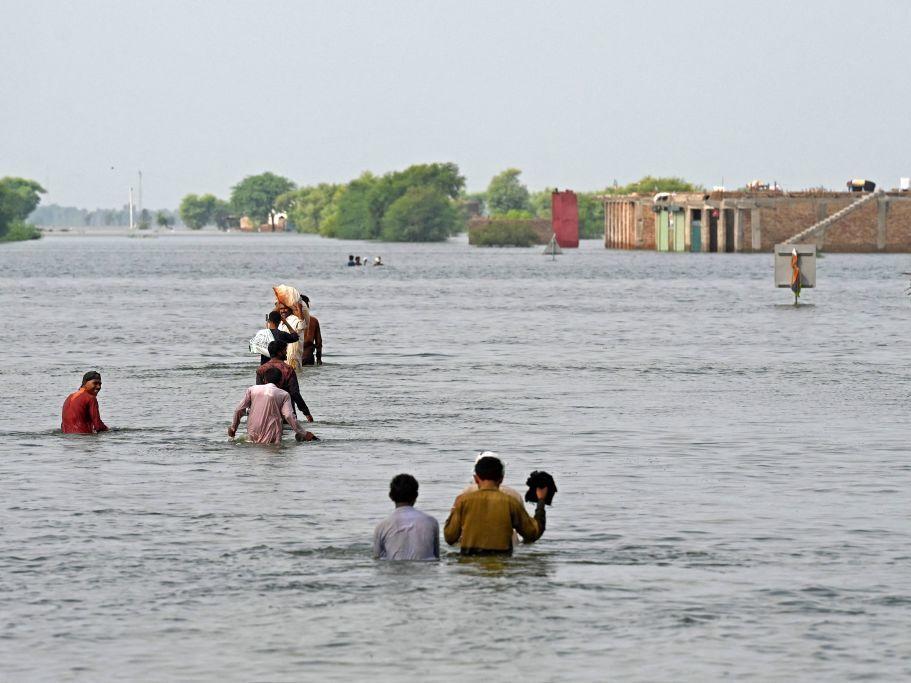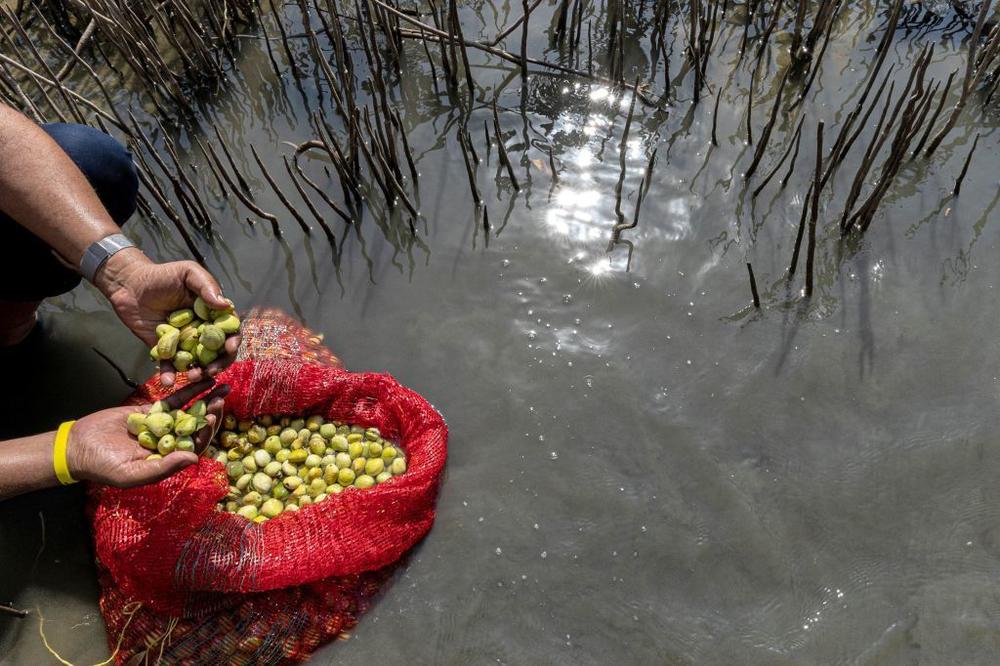Section Branding
Header Content
Countries hit hardest by climate change need much more money to prepare, U.N. says
Primary Content
Developing countries are going to need a lot more money to deal with the risks they face from climate change, according to a new United Nations report released on Thursday.
The impacts from global warming have hit the world's poorest countries especially hard so far, even though they're responsible for a relatively small share of the greenhouse gasses that are causing temperatures to rise. Flooding in Pakistan this summer that killed at least 1,500 people and a multi-year drought in East Africa are evidence of "mounting and ever-increasing climate risks," the U.N. report says.
To help developing nations prepare for more extreme storms, heat waves and floods, industrialized countries gave them around $29 billion in 2020. But that's a fraction of what the developing world needs in order to reduce the damage from extreme weather events, the report says. By the end of the decade, developing countries will likely need up to about 10 times more money every year to adapt to a hotter planet. By midcentury, those annual costs could soar to more than $500 billion.
"The message of this report is clear: strong political will is needed to increase adaptation investments and outcomes," Inger Andersen, executive director of the U.N. Environment Programme, wrote in a foreword to the report.
"If we don't want to spend the coming decades in emergency response mode, dealing with disaster after disaster, we need to get ahead of the game," she added.
The U.N. published the report days before its annual climate conference starts in Egypt. In a separate report published last week, the U.N. said the world isn't cutting greenhouse gas emissions nearly enough to avoid potentially catastrophic sea level rise and other global dangers.
The U.N. climate negotiations scheduled to begin over the weekend in the Egyptian resort town of Sharm el-Sheikh are the 27th Conference of the Parties, or COP27. They are expected to focus on efforts to boost the amount of money that's available to deal with climate change, especially in developing countries.
Most climate financing is going to cutting emissions
Industrialized nations still haven't delivered on a longstanding pledge to provide $100 billion a year by 2020 to help developing countries adapt to climate change and to cut emissions in order to limit further warming, or what's known as climate mitigation. Of the $83.3 billion developing countries received in 2020, most of the money went to mitigation projects, not adaptation, according to the Organization for Economic Co-Operation and Development.
"The discourse needs to be raised significantly, the level of ambition, so that you can actually continue to do what you're doing on mitigation even more, but you at the same time meet the adaptation needs," says Mafalda Duarte, CEO of Climate Investment Funds, which works with development banks like the World Bank to provide funding to developing countries on favorable terms.
To prepare for more extreme weather, the world needs to invest more money in projects to reduce the hazards, vulnerability and exposure that people face, the U.N. says. That could include building water reservoirs in areas at risk of drought, ensuring infrastructure is built to stand up to the impacts of a hotter climate, and providing communities with early warning systems to help people evacuate in emergencies.
At the end of last year's U.N. climate conference, developed countries were urged to at least double their funding for adaptation from 2019 levels by 2025. However, the U.N. says even that amount of money would be insufficient to address the needs that exist in developing nations to prepare for climate risk.
The U.N. also warned that issues unrelated to climate change, including worldwide inflation and the energy crisis caused by the war in Ukraine, could limit how much money wealthier countries are willing to provide developing nations for adaptation.
Duarte says that failing to spend the money that's necessary to limit and prepare for climate change exposes the entire world to potential risks. Those risks could include armed conflicts, refugee crises and disruptions in financial markets, analysts say.
"We have to change our mindset and the way we think, because, actually, when it comes to climate, you know, an investment across borders in other places is a domestic investment," Duarte says.
Copyright 2022 NPR. To see more, visit https://www.npr.org.
Bottom Content





